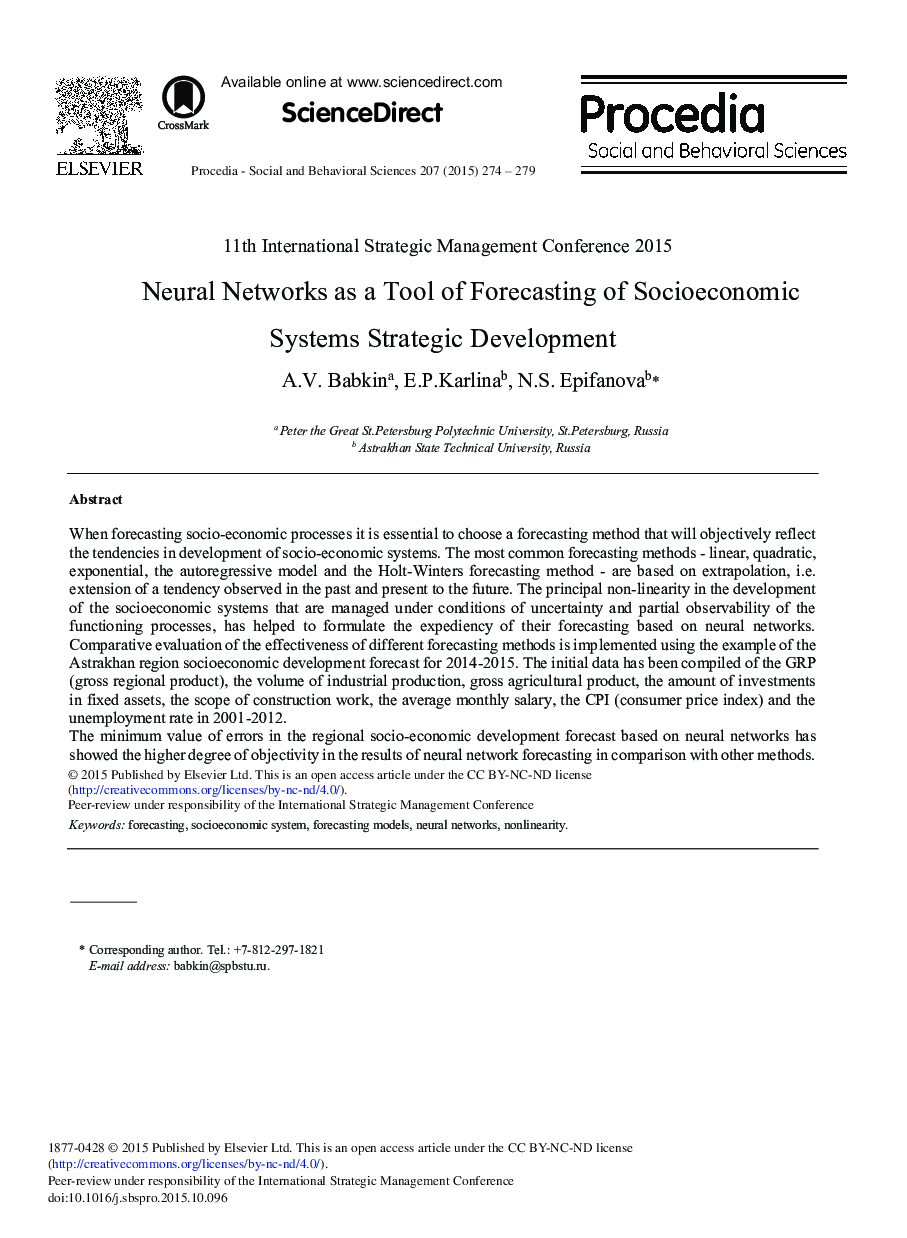| Article ID | Journal | Published Year | Pages | File Type |
|---|---|---|---|---|
| 1108403 | Procedia - Social and Behavioral Sciences | 2015 | 6 Pages |
When forecasting socio-economic processes it is essential to choose a forecasting method that will objectively reflect the tendencies in development of socio-economic systems. The most common forecasting methods - linear, quadratic, exponential, the autoregressive model and the Holt-Winters forecasting method - are based on extrapolation, i.e. extension of a tendency observed in the past and present to the future. The principal non-linearity in the development of the socioeconomic systems that are managed under conditions of uncertainty and partial observability of the functioning processes, has helped to formulate the expediency of their forecasting based on neural networks. Comparative evaluation of the effectiveness of different forecasting methods is implemented using the example of the Astrakhan region socioeconomic development forecast for 2014-2015. The initial data has been compiled of the GRP (gross regional product), the volume of industrial production, gross agricultural product, the amount of investments in fixed assets, the scope of construction work, the average monthly salary, the CPI (consumer price index) and the unemployment rate in 2001-2012.The minimum value of errors in the regional socio-economic development forecast based on neural networks has showed the higher degree of objectivity in the results of neural network forecasting in comparison with other methods.
